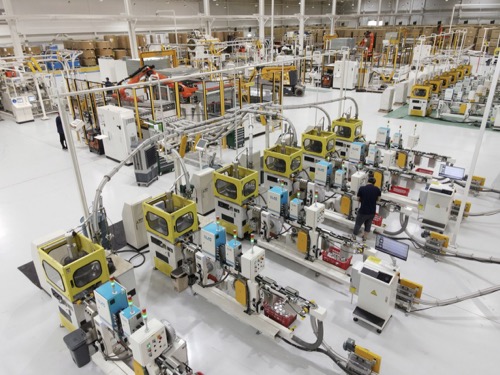Explore Products
E-Axle, Battery Pack, PMSM Motor, OBC and more ...
Our comprehensive offerings help our customers achieve their goals in the emerging EV market.

Customized EV Solution
We have 13+ Years experience in offering EV powertrain solutions across over 30 countries.
Applicable Vehicles
Eog's EV systems cater to various electric vehicle types, from urban delivery and public transport to heavy-duty transport, and beyond.
3.5 T~90 T and above trucks, pick-ups, mining trucks, delivery trucks, concrete mixer trucks trailers, tractors or sanitation trucks
5~18 Meters city buses, coaches, school buses, shuttle buses and trackless rubber wheel train
Service Structure
Consulting
Thorough understanding of your specific needs, including vehicle type, intented use, application scenarios, work environments and potential challenges.
01
Solution
Eog's experts develop a customized solution and related products that best meet your requirements, including product specifications and technical drawings.
02
Coordination
During the whole cooperation, our professional engineers will engage with your technical team to ensure the smooth execution of the proposed solution.
03
Development
Including product or software development, following the outlined solution. Prior to shipment, products undergo rigorous testing and experimentation.
04
Delivery
We guarantee the safe and timely delivery of products to your designated location, ensuring the smooth operation of your electrfied fleet.
05
Support
We continuously provide remote debugging support for product installation and ongoing technical support for any questions or issues you may have.
06
Company Profile
Leading Provider of EV Powertrain Solutions
We are committed to becoming a first-class new energy power system solution provider
100
Solutions have been sold to over 100 customers.
15
years experience & ability in electric vehicle solution
Wuhan EOG Vehicle Co,.Ltd
was estalblished in 2017. We have been committed to providing high-quality auto parts to foreign countries for manyyears. As the concept of environmental protection has been deeply rooted in the hearts of the people around the world,green travel, energy-saving and environmentally friendly vehicles aire favored by people all over the world.
Our powertrain solutions are applicable to small cars,light trucks, heavy trucks, buses, constructiomachinery, and electric boats.
Our Mission : Electrifying your fleet with EOG EV Powertrain Technology. We are dedicated tomaking all vehicles and boats energy-efficient and environmentally friendly.
Our clientele includes OEMs and various entities within the EV sector, ensuring that we meet theunique needs of each partner.
Our solutions, which are already deployed on electric vehicles in over 20 countries, have helped OEMs and other EV companies save time and money, increase efficiency, and speed up theelectrification process.
Our Partners








Our Factory














OUR ADVANTAGES
Cost-Effective
Maximize performance
Minimize maintenance
Speed up project cycle
Reduce R&D and operation cost
Easy to maintain
Customized Solution
Mainly for small and medium-sized enterprise customers.
Tailored solutions for electric trucks, buses, and off-highway vehicles.
Comprehensive Service
Presales solutions consulting
Technical coordination for smooth execution
Safe and timely delivery
Providing technology upgrade
Post-sales technical support
Advanced Technology
6-in-1 electric powertrains
Traction battery
Axial flux motors
Skateboard platforms
Steer by wire
Electronic ASR and electronic ESP






